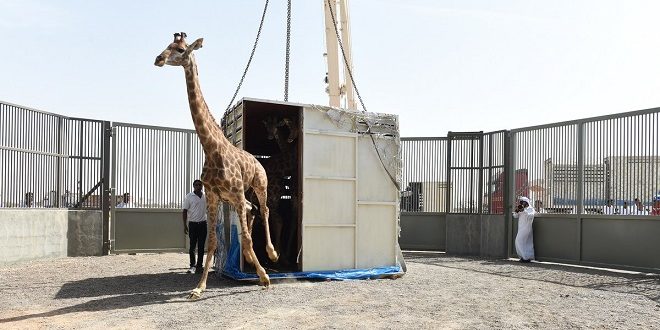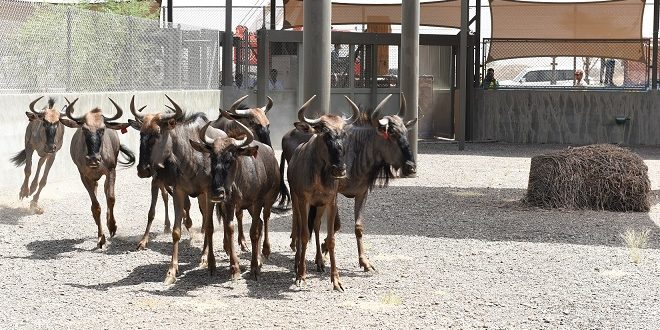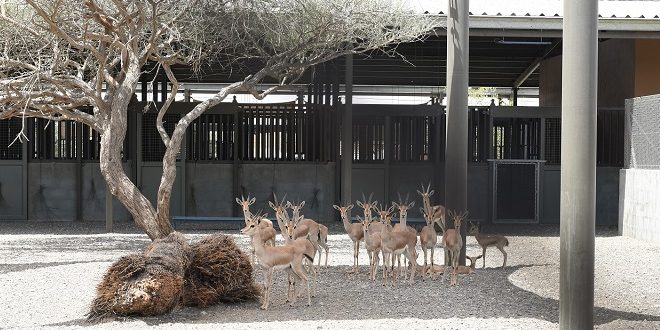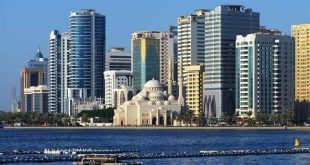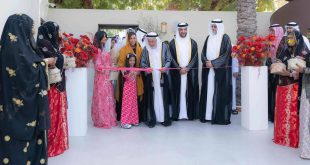The Environment and Protected Areas Authority (EPAA) has announced that it has imported 288 wild animals from South Africa into the emirate, bringing Sharjah’s vision for what could be the largest safari park project outside Africa one step closer to reality. The animals are being cared for by experts at the Seih Al Bardi Park (Elebriddi Wildlife Protected Area) and acclimatised in compounds, whilst trees are planted and park infrastructure is under construction.
Located in Al Dhaid in Sharjah emirate’s interior, phase one of Seih Al Bardi Park was officially opened as a conservation area in 2007, as part of Sharjah’s effort to protect natural ecosystems and biodiversity. The landscape of Al Bardi is typified by gravel plains with a high density of Acacia trees, providing a suitable habitat for different forms of wildlife and an ideal environment for many different native and imported species.
Last year, the EPAA received approval from the Ruler of Sharjah to begin the second phase of the Seih Al Bardi Park, which will see an area of 14 square kilometres (about 3,500 acres) developed as a wildlife safari park. The project will develop the area to create a sustainable tourism destination with a safari park that contributes to wildlife conservation efforts, accommodating up to 50,000 animals. The plan also forms part of a comprehensive strategy to turn the Al Dhaid area into a tourism destination, while expanding Sharjah’s endangered wildlife breeding programmes.
Among the 17 different African animal species that have been imported for the Al Bardi Park project are 15 different species of antelope, 15 south african giraffes (Giraffa camelopardalis giraffa) and 5 rhino (species unspecified). According to the EPAA, Sharjah’s reputation and track record in conservation and breeding of endangered species was instrumental in securing necessary international approvals and cooperation for the shipments.
African antelope species imported include: 42 springbok (Antidorcas marsupialis), 36 impala (Aepyceros melampus), 26 greater kudu (Tragelaphus strepsiceros), 24 blue wildebeests (Connochaetes taurinus), 16 gemsbok (Oryx gazella), 12 common eland (Taurotragus oryx), 12 waterbuck (Kobus ellipsiprymnus), 12 blesbok (Damaliscus pygargus phillipsi), 10 lechwe (Kobus leche), 8 black wildebeest (Connochaetes gnou), 8 nyala (Tragelaphus angasii), 8 southern reedbuck (Redunca arundinum), 8 red hartebeest (Alcelaphus buselaphus caama), 6 klipspringer (Oreotragus oreotragus) and 4 common duiker (Sylvicapra grimmia).
Last year, the EPAA opened the new 12 square kilometre (3,000 acre) Al Hefaiyah Mountain Conservation Centre in the Hajjar mountains to the public. Other wildlife reserves and centres open to the public include the Wasit Wetland Centre in Sharjah city, Kalba Bird of Prey Centre near the emirate’s east coast and Arabia’s Wildlife Centre on the Al Dhaid road.
An opening date for the Seih Al Bardi Park has yet to be announced.
Source: EPAA, media

